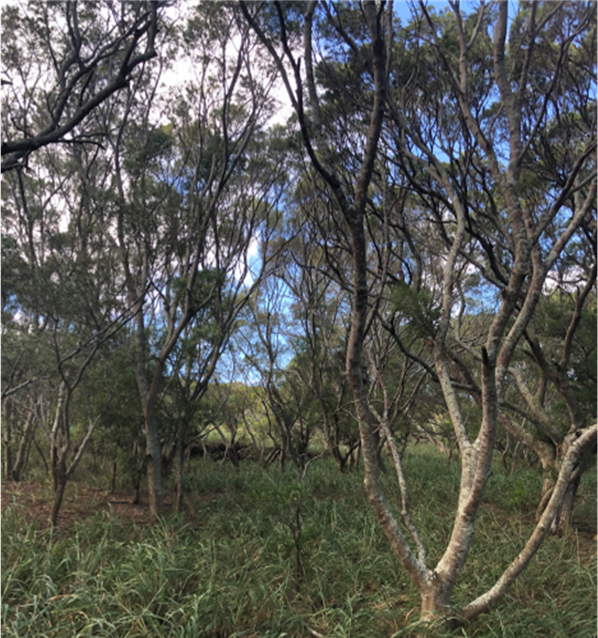Spotlight Conservation Practice
Brush Management
Definition: Removal, reduction, or manipulation of woody plants that are invasive or noxious.
Objectives:
- Create the desired plant community
- Restore desired vegetative cover to protect soil, control erosion, reduce sediment, enhance hydrology, or improve water quality
- Maintain, enhance, or modify fish and wildlife habitat
- Improve forage accessibility, quality, and quantity for livestock and wildlife
How does it work?
Brush can be managed in several ways by prescribed grazing, mechanical treatment, and chemical treatment. The method used is dependent on the type of brush species, operation, topography, soil, and economics. A combination of different methods are usually the most successful.
- Chemical treatment involves applying herbicide to the plant or soil at the correct amount and favorable weather conditions
- Mechanical treatment includes mowing, chainsaw, disking, and mastication
- Proper grazing management reduces brush species but needs to be continuous
What are the benefits?
- Manage noxious and invasive woody plants
- Reduce competition for desirable plant community
- Increase water and forage availability that results in higher forage quality for livestock, available water for native plant species, increase water infiltration and aquifer recharge
- Improve grasslands by reducing soil erosion and runoff, creates diverse wildlife habitats
Brush management plan includes: 1) Guidelines on how to treat noxious/invasive plant species following proven methods. 2) Map with narratives detailing and identifying treated areas, pattern of treatment, and areas that will not be disturbed.
Facilitative Practices
- Pasture and Hay Planting
- Range Planting
- Woody Residue Treatment
- Prescribed Grazing
- Tree/Shrub Establishment

Strawberry guava on agroforestry

Formosa Koa on grazling land

Gorse on grazing land
Resources
Weeds of Hawaii: pesticide control methods
Previous Conservation Practice Feature
